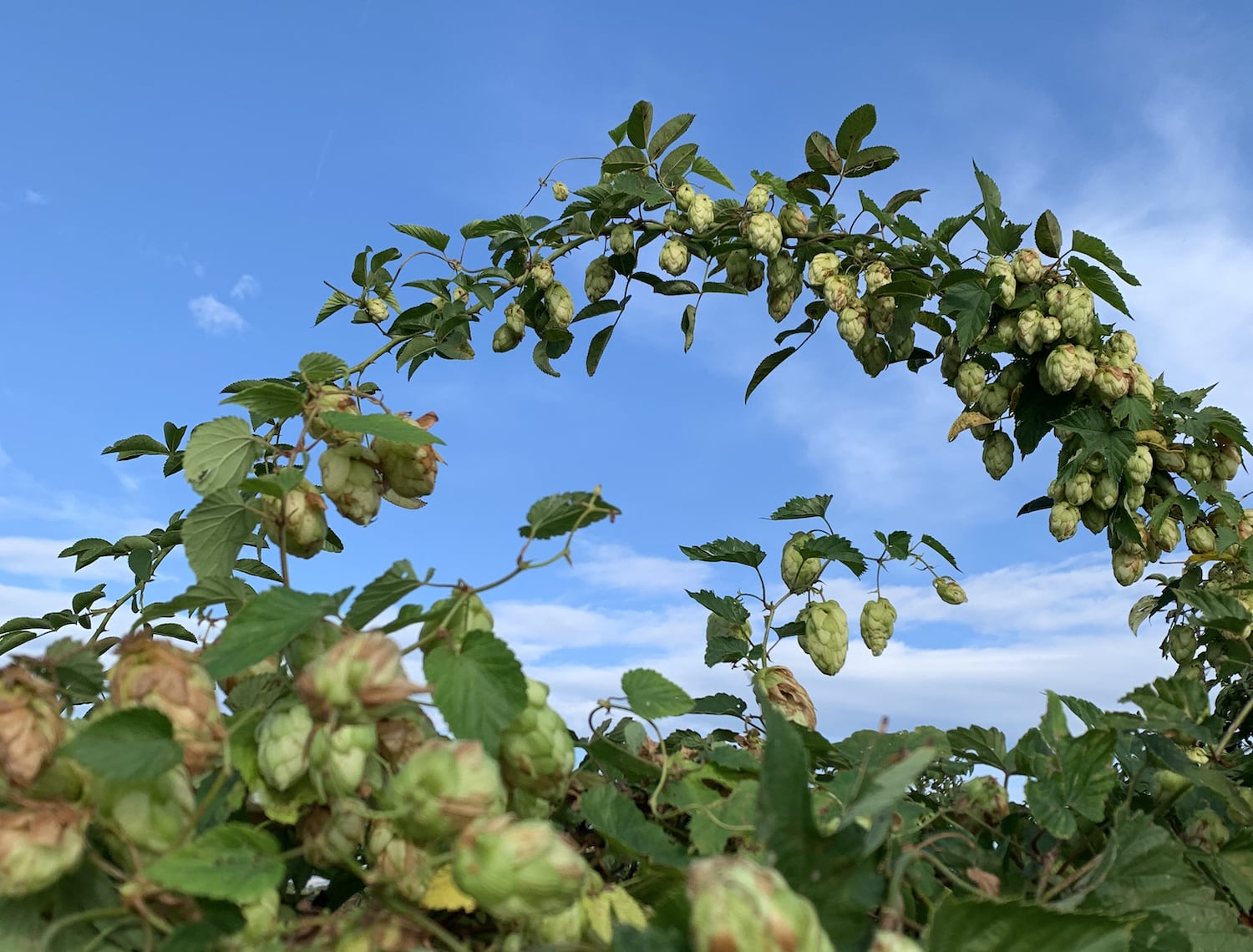Hops & wine
Written by Franz Weninger on the 28th of September 2021
When I walked by our wood storage area near the Frauenbrunnbach during the 2017 harvest, I was struck by the loud, fresh, grassy scent of the wild hops that grow along the fence there.
Convinced of their use, I talked to my beer brewing friends. But since they showed no interest, I decided to harvest the hops myself and use them for wine making.
The first attempt failed, but in 2018 we were more successful: Our wine flavored with wild hops was maturing in the cellar! Fascinated by the wine’s hop aromas, which it mainly showed in the nose, we filled it in beer bottles and christened it “A Glimmer of Hops”.
What I noticed during the lab analysis was that it still showed malic acid. Grapes naturally have tartaric and malic acids. After the wine has matured for a long time, the malic acid is converted into lactic acid: malolactic fermentation. The lack of the malolactic fermentation in the hopped wine puzzled me and I met up with Peter, my friend from the Kobersdorfer brewery. He explained to me that it was logical, and that this was how the IPA* came about: The English brought beer to India, but the beer turned sour on the long sea transport in the kegs. The formation of volatile acidity in beer is called sour - typical examples of such beers can be found in Belgium, mostly under the influence of Brettanomyces yeasts, e.g. Lambic**. To avoid this souring, the English started hopping the barrels a second time. Because the hops have an antibacterial effect and thus prevent malolactic fermentation.
Through my original idea of using the hop aroma for wine, I had now come across the same effect by chance: because it was precisely this antibacterial effect that also showed in the wine.

This was interesting for us in that we encountered new challenges with a different wine around the same time:
Due to the success of our rosé Rózsa Petsovits, we began to press more and more grapes directly into rosé in 2017. In the hot years of 2018 and 2019 and due to the lack of the skins (where nutrients for yeast fermentation are also located), we unfortunately lost some wines. They got sour, as you would say with beer. When it comes to wine, one says volatile. Due to the lack of nutrients, the yeast stopped its work in these years and sugar remained in the wine. This was then not converted into lactic acid by the lactic acid bacteria, but into acetic acid.
Knowing about the antibacterial effect of hops, I unexpectedly had a tool against this souring of rosé. In 2020 there was enough nutrient in the juice due to the rain shortly before the harvest and we didn't have to use it. In 2021, it currently looks like a good supply of nutrients and thus nice fermentations. Still, I keep my knowledge of this tool at hand. Firstly, it corresponds to the biodynamic idea of the circular economy, because it is a medicine that I can make myself (as opposed to sulfur. Second, it works stronger than sulfur against bacteria. So it may well happen that in future hot years Rózsa will not come onto the market as a wine, but as a wine naturally flavored with hops. In contrast to our A Glimmer of Hops, we will try to keep the aroma influence of the hops very low in order to show our region - in this case Sopron & Mittelburgenland - in the wine.
Our conclusion: an experiment that originally aimed to use all the resources from our gardens resulted in a new approach to a completely different problem. A different starting point can also lead to unexpected solutions.
*IPA: India Pale Ale: ein helles, obergäriges Pale Ale mit starker Hopfennote. en.wikipedia.org/wiki/India_pale_ale
**Lambic: en.wikipedia.org/wiki/Lambic